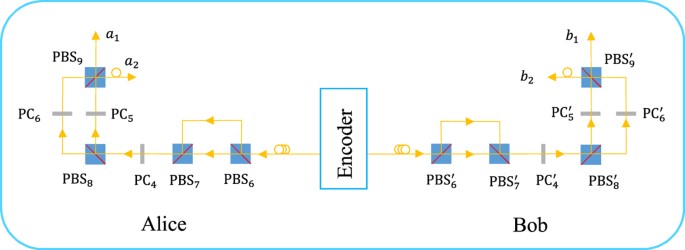

Transversality means that the corresponding physical charge T A = ∑ T i is a sum of terms, each supported on a single subsystem. To understand why, consider two eigenstates with different eigenvalues of the logical charge T L that generates the symmetry.
#QUANTUM ERROR CORRECTION ENCODING ISOMETRY CODE#
No such code provides exact protection against erasure of a single subsystem. This compatibility means that by rotating all individual physical subsystems one induces the same transformation as if one had simply rotated the initial logical system L. Suppose that the code is compatible with a continuous transversal symmetry, for instance, rotations in 3D space. Quantum information represented on an abstract logical system L is encoded on several physical subsystems A 1 … A n using a code. Covariant codes are also of potential interest in quantum computing, because protected information can be processed by acting on the individual letters rather than collectively on several letters, though there are serious limitations on the reliability of such schemes for processing information. Our results clarify how quantum states can robustly convey information about a reference frame. We show that loss of a letter can be approximately corrected by a covariant code, with a residual error that becomes arbitrarily small when either the number of letters or dimensions is large. Previous work had shown that no code covariant with respect to a continuous symmetry can provide perfect protection against an error in which one of the letters is lost.

Such a code is said to be covariant with respect to a symmetry if the encoded state can be transformed by applying that transformation to each of the code’s letters. A quantum error-correcting code records a quantum state using a number of “letters,” where each letter is a multidimensional quantum system, such that the state can be recovered even if some of the letters are destroyed. Here, we study a fundamental tension between the continuous symmetries of a QEC code and the code’s effectiveness.Īny message-including quantum states-can be protected by redundancies. In addition to its importance for future quantum technologies, QEC is also a fundamental principle of physics, with far-ranging implications for fields as diverse as quantum chaos, topological quantum states of matter, and quantum gravity. Quantum error correction (QEC) enables a quantum computer to operate reliably even when the computing hardware is prone to error. In the context of the AdS/CFT correspondence, our approach provides insight into how time evolution in the bulk corresponds to time evolution on the boundary without violating the Eastin-Knill theorem, and our five-rotor code can be stacked to form a covariant holographic code. We systematically construct codes covariant with respect to general groups, obtaining natural generalizations of qubit codes to, for instance, oscillators and rotors.
#QUANTUM ERROR CORRECTION ENCODING ISOMETRY FULL#
We construct codes covariant with respect to the full logical unitary group, achieving good accuracy for large d (using random codes) or n (using codes based on W states). Leveraging tools from representation theory, we prove an approximate version of the Eastin-Knill theorem for quantum computation: If a code admits a universal set of transversal gates and corrects erasure with fixed accuracy, then, for each logical qubit, we need a number of physical qubits per subsystem that is inversely proportional to the error parameter. We exhibit codes achieving approximately the same scaling of infidelity with n or d as the lower bound. This bound approaches zero when the number of subsystems n or the dimension d of each subsystem is large. For a G-covariant code with G a continuous group, we derive a lower bound on the error-correction infidelity following erasure of a subsystem. If a logical quantum system is encoded into n physical subsystems, we say that the code is covariant with respect to a symmetry group G if a G transformation on the logical system can be realized by performing transformations on the individual subsystems. Here, we study the compatibility of these two important principles.

Quantum error correction and symmetry arise in many areas of physics, including many-body systems, metrology in the presence of noise, fault-tolerant computation, and holographic quantum gravity.


 0 kommentar(er)
0 kommentar(er)
